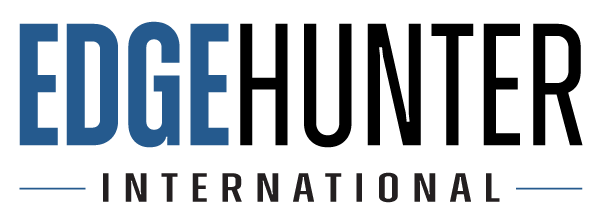U.S. Job Market Update: June 2025 Labor Trends for Employers and Job Seekers
The June 2025 labor market report shows a resilient but cooling U.S. economy. With 147,000 jobs added and unemployment holding at 4.1%, the data reveals growing caution among employers and rising pressure on job seekers.
In this post, we breaks down what these numbers really mean for companies planning their next hires and for candidates navigating a more competitive landscape.
| Highlight | Brief Summary |
|---|---|
| 📈 Jobs Added | 147,000 jobs were added in June 2025, exceeding forecasts and signaling ongoing resilience. |
| 📊 Unemployment Rate | Held steady at 4.1%, showing stability despite slower hiring. |
| 💼 Sector Growth | Government, healthcare, and social assistance led job gains across industries. |
| 📉 Hiring Caution | Private-sector hiring slowed; businesses are becoming more selective. |
| 💰 Wage Growth | Annual wage growth eased to 3.5–3.9%, helping stabilize inflation outlook. |
| 🔁 Flexible Staffing | Recommended for employers seeking agility and risk control in a changing market. |
In June 2025, the U.S. labor market added 147,000 jobs, outperforming consensus forecasts (~110,000) and signaling resilience amid mounting economic uncertainty. The unemployment rate held steady at 4.1%, aligning with a year-long trend between 4.0%–4.2% Bureau of Labor Statistics. Wage growth has slowed moderately (~3.5%–3.9% annually), easing inflation concerns even as hiring cools.
Key sector highlights:
-
Government employment surged, adding ~73,000 jobs, largely in state/local education, offsetting a modest drop (~7,000) in federal roles.
-
Healthcare & social assistance remained growth drivers—adding ~39,000 and ~19,000 jobs respectively.
-
Private sector hiring weakened: employer job gains dropped to ~74,000, the lowest level in eight months—signaling increased caution amid trade and policy headwinds The Wall Street Journal.
Deeper Insights & Data
Signs of Labor Market Cooling
Job openings as of May reached 7.77 million, surpassing forecasts, yet hiring fell by ~112,000—a sign that businesses are holding back on making long-term staffing decisions amid uncertainty. Meanwhile, continuing unemployment claims have crept up to nearly 2 million—the highest since 2021—hinting at growing friction in labor transitions— businessinsider.com.
Why This Matters
The U.S. workforce continues to shrink slightly in participation due to retiring Baby Boomers and stricter immigration policy—exacerbating persistent labor shortages even as unemployment stays low (~4.1%)— The Global Statistics. This makes it tougher for employers to recruit—and tougher for job seekers to stand out.
Fed & Policy Signals
Strong job gains in June dampened expectations for a Federal Reserve interest rate cut in July, with odds dropping from ~24% to below 10% after the stronger report. Continued trade tensions and evolving immigration enforcement are cited as key factors damping hiring confidence
See related: US job market surprises with increased openings in May

What Employers Should Do
-
Plan for cautious hiring: Growth has slowed, so align recruitment with core, strategic needs—especially in health care, education, and critical project teams.
-
Revisit flexible staffing models: Temp‑to‑hire and contractor strategies give scalability without long-term risk.
-
Anticipate wage stabilization: With slower wage growth, budget forecasting can improve—but competitive compensation remains essential.
-
Monitor claims and job openings: Rising claims and stagnant hiring signal internal friction; track them to fine‑tune retention and talent pipeline strategies.
What Job Seekers Should Know
-
Expect fierce competition: With labor participation steady but job openings high relative to hiring, quality matters more than ever—tailor resumes and highlight niche skills.
-
Stay skill‑focused: Specialized fields like healthcare and education are still expanding, offering more entry points.
-
Be open to flexibility: Temp, contract, or hybrid roles can be strategic foot‑in‑the‑door options—which often convert to permanent offers.
What to Watch Next
-
Job openings vs. hires: Will the JOLTS report for June (due July 29) continue to diverge?
-
Long‑term unemployment trends: Fewer job transitions could drag down labor fluidity.
-
Policy developments: Tariff expirations or new rulemakings could affect hiring sentiment sharply.
Bottom Line
The June 2025 data confirms what many are already feeling: employers are cautious, job seekers face tightening markets, and the labor landscape is shifting. But in this environment, a strategic, flexible staffing approach is more vital than ever. That’s where Edge Hunter steps in—helping you navigate complexity, tap under‑leveraged talent pools, and stay ahead of change without compromising quality.
Frequently Asked Questions (FAQ)
1. What were the key highlights from the June 2025 U.S. jobs report?
The U.S. added 147,000 jobs in June 2025, surpassing expectations. The unemployment rate remained steady at 4.1%, and wage growth slowed slightly, signaling a more cautious but stable hiring environment.
2. Which industries are hiring the most in mid-2025?
In June, the strongest job growth was in government, healthcare, and social assistance. These sectors continue to expand despite overall cooling in private-sector hiring.
3. Is the labor market slowing down in 2025?
Yes, hiring is decelerating. While job openings are still high (~7.77 million), actual hiring has slowed, and continuing unemployment claims are rising. This suggests a more selective, risk-aware approach from employers.
4. What should employers do in a cautious hiring environment?
Employers should consider flexible staffing models like contract, temp-to-hire, or project-based roles. These allow for agility without long-term commitments, helping businesses manage uncertainty and stay competitive.
5. How can job seekers stay competitive in 2025?
Job seekers should tailor applications, focus on in-demand skills, and remain open to flexible roles. Sectors like healthcare and education are strong entry points, and contract roles can lead to full-time opportunities.
6. Will slowing wage growth affect hiring or inflation?
Slower wage growth (around 3.5%–3.9%) may ease inflation pressures and help the Federal Reserve manage interest rates, but companies still need to offer competitive compensation to attract talent in a tight labor market.
7. How does flexible staffing help during uncertain economic times?
Flexible staffing gives companies the ability to scale teams quickly, control costs, and respond to shifting market demands without the risks of over-hiring or long-term overhead.



